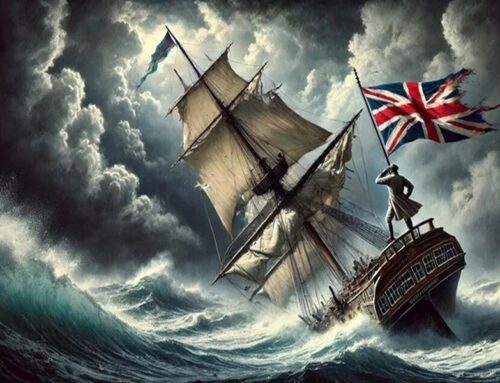Last line of defence – people die if there is not one
The nature of risk and chance in life is such that accidents, be they major or minor, do not, by themselves, mean that people will either die or survive. The scale of the accident may not necessarily have a bearing on whether its victims receive only minor injuries or whether they succumb to the trauma visited upon their bodies
Following last month’s article on the loss of the RMS TITANIC it can be seen how the absence of a last line of defence led directly to the deaths of 1,517 men, women and children of all social ranks in life
In the hours leading up to the collision Captain Smith and his officers on the bridge had tried to ensure there was a last line of defence against hitting one by the prudent measure of employing two lookouts, high in the crow’s nest, specifically tasked with looking for such a risk and reducing the chances of a collision by early sighting and immediate advice to the bridge. These lookouts were a preliminary last line of defence in avoiding a collision. So far so good, but their sighting of the iceberg and immediate report to the bridge came too late to save the ship. There is no criticism of them. They could only report what they saw when they saw it, and had the Titanic been steaming at a few knots less than her 21.5 knots, it is possible, perhaps even probable, that the ship could have been manouvred in good time to avoid any contact with the iceberg, and history would have been different
In terms of accidents, it was only a minor contact – a mere brushing of steel against solid ice – that did not result in any deaths, nor in any reported injuries, save for some stokers and firemen, who would have been on the receiving end of a cold and wet soaking. A very unpleasant surprise indeed but not in itself injurious to them. This begs the question, why did 1,517 people die following such a minor event? The answer, sadly, is that there were insufficient lifeboats for all on board, in fact well short of capacity for the compliment of crew and passengers. When the worst comes to the worst, having a sufficient number of lifeboats for ALL on board, plus an extra ten per cent capacity to cope with the imperfections of post-accident activities, is the last line of defence. This was not the case with the Titanic. Much has been made of the fact that she complied with the minimum requirements of the UK Board of Trade regarding life-saving equipment but that does rather miss the point that she had no last line of defence for all those on board, so 1,517 poeple died un-necessarily
It is a sad fact of life that lessons are not always learned. In an accident on a motorway in England that crossed a high speed railway line, a car accidentally drove off the motorway and onto a busy high speed railway. It was too late to stop the approaching train, which collided with the vehicle, became derailed and was put into the path of a goods train coming in the opposite direction. Ten people died and many were injured, some seriously. The car driver was blamed and was sentenced to a term of imprisonment
But did ten people have to die? They died because there was no last line of defence but there could have been, and at relatively little cost. When the motorway was under construction it was known that it would carry thousands of vehicles every day in both directions, so the chance of a vehicle coming off the motorway and fouling the railway track was obvious. Whilst it would be impossible to stop this happening it would have been easy, and at relatively little cost, to have provided a last line of defence against death or injury to rail passengers by extending the bridge either side by perhaps up to 100 metres, making it a short tunnel. Any vehicle then coming off the motorway, for whatever reason, would simply have run onto the grass and would not have fouled the track. There would have been no colision, no derailment, no crash with another train and, most important, no deaths or injuries
The ‘last line of defence’ argument is not restricted to matters maritime. It applies also to all aspects of our lives. The motor industry is well ahead of the field in this respect for it provides many last lines of defence in the cars that we drive. Think of air bags, anti-lock braking systems (ABS), crumple-free zones, laminated windscreens, seat belts, reinforced side-bars in doors, and many other safety features. None of these have any bearing on the operation of the motor car from the day it leaves the assembly line until the day it meets the scrap merchant and very few of these devices are called upon to operate. They just remain inert until the unlikely event in which they are called to operate actually happens. But when they operate they do so instantaneously, in the case of air bags they inflate and deflate in milliseconds, but lives are saved and injuries reduced where, in their absence, lives would be lost and injuries made horrendous. These safety devices are the last line of defence in a motor accident. They don’t discriminate between a driver fault and one in which the driver is innocent. They just operate in the manner for which they are designed
The principle surrounding the last line of defence does not concern itself greatly with the laws of chance. If the risk is there, and can be eliminated, it should be. Arguments that the chance of it happening are one in a million are not claims that should be made to justify the absence of a last line of defence. If the risk is apparent it should be guarded against, with the protection of life and limb being more important than the cost of providing a last line of defence






